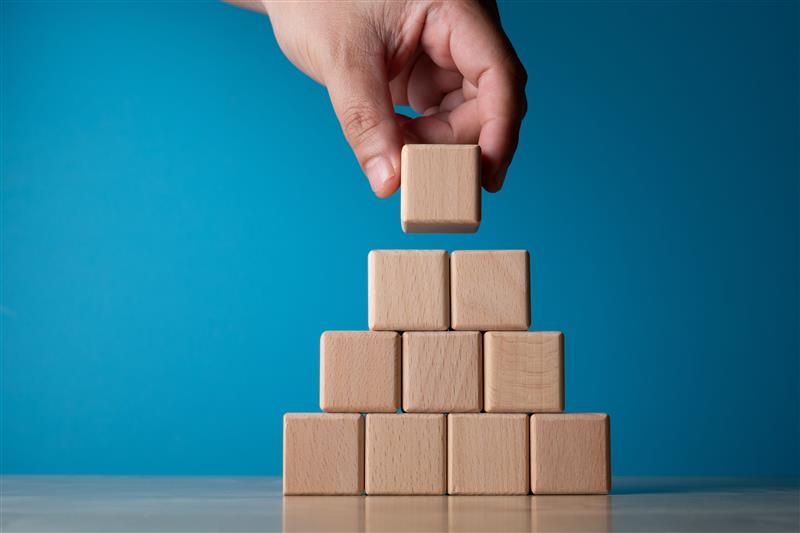Discover how blending competition and collaboration in the workplace can drive employee engagement, all through the unique lens of a Game Designer. Explore strategies that turn everyday tasks into meaningful, motivating experiences.

Back to Blog
Written by Miguel Almeida, Game Designer at vaibe
As a fun-centric person, I believe “fun and engagement” should be at the core of all gamification design principles. You can layer on goals, feedback or point systems, rewards, and all sorts of game elements, but you’ve already lost your players if the user experience isn’t fun. As the legendary Reggie Fils-Aimé once said: “If it’s not fun, why bother?”
When designing gamified experiences, I focus on making them fun and engaging, then build everything else around that.
Set clear goals, relatable objectives, and tangible feedback loops to help anchor users. Establish short-term progression systems and rewards (earning points, coins, custom prizes) and long-term targets (mastery, leveling up) to increase engagement and make the journey feel worthy. But none of that matters if your users aren’t smiling in real life while they do it.
Competition is a fundamental aspect of human experience. Some people are intrinsically motivated by the drive to be the best or surpass others on the leaderboard. As long as there is a competitor and a reward for winning, these players will remain engaged through the gamification experience. In a way, they’re always playing games.
On the other hand, collaboration is an equally important aspect of game mechanics and can complement competition.
Collaboration focuses more on team building and incorporating social aspects of gamification by achieving goals as a group while fostering stronger connections among team members. This “co-op” also helps lighten the burden of tasks while ensuring that everyone feels included in achieving them. In a collaborative challenge, everyone’s contribution, no matter how big or small, is valuable.

In 2023, the Taylor & Francis group published a paper on the effectiveness of cooperative and competitive gamification in mobile fitness apps among occasional exercisers. This study aimed to assess if gamification had a significant effect on the exercise habits of participants and to determine if there were notable differences in preferences between collaborative and competitive gamification systems.
Co-op features are focused on social motivation, encouraging users to work out with others and support each other. However, the study found that the most favorable results came from competitive elements. When users received praise and recognition from the app, they felt more motivated to surpass their personal best each day.
Because exercise is such a personal activity, competitive elements tend to engage users more effectively. Still, the fact that collaboration had any impact in such an individual setting shows it also holds real value in gamification.
Combining competition and collaboration in a single gamified environment? That’s a delicate balance. Each has its nuances and if balance isn’t maintained, they may end up clashing. Let me explain!
Competitive games are complex since you must carefully balance rewards. Obviously, you want to give the top performers the best prize, but this could backfire. Just rewarding top players could disengage non-winning ones. However, fear not – there are several ways to resolve this issue. Here are some of them:
Collaborative games also have possible pitfalls, but in these games, it’s the top-performing players who run the risk of ending up disengaged.
Since collaborative games rely on the collective contributions of participants, individuals who underperform may simply tag along and be carried to victory by the stronger and more skilled players. This, in turn, leads to both the disengagement of the weaker player (who was
already disengaged) and of the stronger player, who sees that not everyone on their team is pulling their weight.
In successful co-op games, there is a constant balancing act between the individual contributions of each player and the collective achievements of the group. While the group’s objective is the main focus, it is important that the individual efforts are still valued.
If one mode (competitive or collaborative) becomes the “winning strategy,” people will flock to it. Those risks disengage the other users. In other words:
The solution? Keep tinkering. There’s no perfect formula. The best gamification designers are part strategist, part scientist. Constantly testing, adjusting, and refining to keep the game balanced and the players smiling.

At vaibe, we take these design principles seriously. Our mission is simple: get users to engage and ensure they stay engaged. That is why we see the balance between fun, competition, and collaboration not as a one-time thing, but as an ongoing process of testing, refining, and evolving.
To truly understand what engages our users, we have developed a custom metric called the “Engagement Score.” It’s based on data from real user behavior and tells us how engaging each session is for different types of players. It also helps us define player personas, which guides our future developments.
We use these insights to:
Our challenge creator is built to be flexible and powerful. Whether you want a team-based collaboration challenge, a head-to-head competition, or a hybrid event, our system can make it happen. We’ve designed it to support a wide range of game modes and styles, so whatever your players enjoy, there’s a format that fits.
However, it doesn’t stop there. We also offer a wide range of features that appeal to both competitive and collaborative player types:
As a game designer, I believe in staying grounded in what matters most: the players. Understanding their needs, motivations, and behaviors enables us to deliver a gamification solution that truly resonates. The challenge of balancing competition and collaboration keeps us aligned with our mission, allowing us to continue creating meaningful, fun, and engaging experiences for everyone.
Now that you have a better understanding of how vaibe blends collaboration and competition – and how it designs gamification solutions that enhance motivation, adapt to different workplace cultures, and boost team performance – one question remains:
Ready to level up your software’s workplace engagement? Request a demo and try vaibe today!
About Miguel Catou Almeida
Game designer at vaibe
Miguel Almeida is the game designer at vaibe. He’s in charge of everything related to games and gamification, from designing systems and mechanics to balancing numbers and finding new ways to make the experience more engaging. If it’s a game feature, he probably had something to do with it!

Discover how vaibe’s white-label gamification transforms your software offering, driving employee engagement, productivity and market differentiation.
Understand how to immediately start boosting business productivity with gamification tools that drive real results.
Learn effective strategies to boost employee engagement, retention, and workplace satisfaction.
Explore gamification in daily life through fitness, retail, and education with “invisible games” examples.